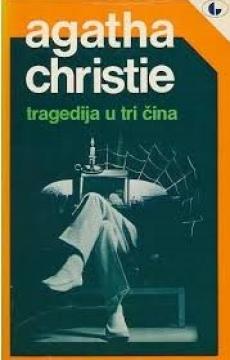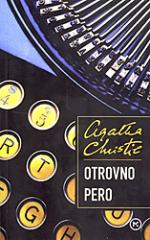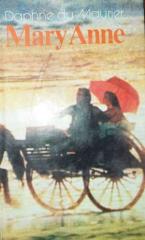
Tragedija u tri čina
Tragedija u tri čina je detektivski roman Agathe Christie iz 1934. godine, poznat po zapletu s Herculeom Poirotom. Radnja se odvija u tri čina, svaki u drugom okruženju, s nizom ubojstava koja na prvi pogled nemaju poveznicu.
Roman istražuje teme prijevare, ljubomore i pažljivo isplaniranog zločina, uz Christiein tipičan obrt na kraju. Poirotova dedukcija i psihološka analiza ključni su za razrješenje.
Prvi čin: Na zabavi u kući poznatog glumca Sir Charlesa Cartwrighta, svećenik Stephen Babbington iznenada umire nakon što popije koktel. Nema dokaza o otrovu, pa se smrt čini prirodnom. Poirot, prisutan na zabavi, počinje sumnjati.
Drugi čin: Nekoliko mjeseci kasnije, dr. Bartholomew Strange, psihijatar i Cartwrightov prijatelj, umire na sličan način na zabavi u svojoj kući. Autopsija otkriva trovanje nikotinom. Poirot povezuje dva slučaja, istražujući goste prisutne na obje zabave, uključujući Cartwrighta, njegovu prijateljicu Hermionu Lytton Gore i ambicioznu dramatičarku Muriel Wills.
Treći čin: Poirot otkriva da je ključ zagonetke u motivu i metodi ubojice. Ubojstva su inscenirana kako bi prikrila pravi cilj – eliminaciju specifične žrtve. Nakon analize odnosa među likovima i suptilnih tragova, Poirot razotkriva Sir Charlesa kao ubojicu. On je otrovao Babbingtona i Strangea kako bi prikrio ubojstvo svoje supruge, koju je držao u tajnosti, a motiv je bila želja za slobodom i novim životom.
Nema primjeraka u ponudi
Poslednji primjerak je nedavno prodan.





